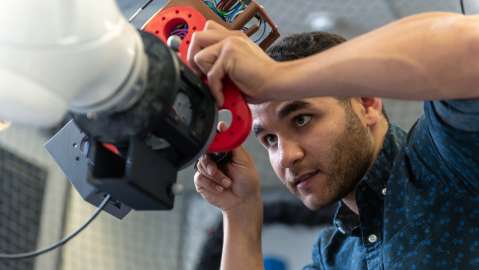Aerospace Virtual Tours
Aerospace's virtual tours allow you to explore our state-of-the-art facilities from the comfort of your own desk. Available self-guided tours include:
• xLab
• iLab
• STARS Mission Operation Center
• Physical Sciences Laboratories
• xLab
• iLab
• STARS Mission Operation Center
• Physical Sciences Laboratories

New xLab Facility Enhances Aerospace’s Prototyping Capabilities
The newly unveiled xLab facility will equip our technical experts to build innovative prototypes and instruments to advance space technology.

New COVID-19 Norms Foster Agile Smallsat Innovation
Aerospace engineers have pioneered new, innovative means of accomplishing laser alignment communications remotely, in compliance with new health safety guidelines.

New Electric Propulsion Chamber Explores the Future of Space Travel
Aerospace's world-class electric propulsion testing facility will test the newer, high-powered thrusters needed for future space exploration.

Aerospace Technical Fellows: Distinguished Experts Across the Space Enterprise
The Technical Fellows provide unparalleled expertise in a range of technical disciplines that impact Aerospace and the broader space enterprise.

University Partnership Program
The University Partnership Program facilitates collaboration with top universities to provide resources, mentorship, and hands-on experience for students to explore potential career paths in the space sector.

Novel Satellite Deorbiting Method Can Help Mitigate Space Debris Crisis
Aerospace is developing a novel technology to reduce the amount of debris being left in this critical environment. The solution, known as the Lithium-ion Battery Deorbiter, will utilize the battery already on board the spacecraft to reduce debris by igniting the battery into thermal runaway to generate thrust for deorbit.

Specialized Applications
Aerospace develops custom applications and software to support launch operations, mission assurance, and unique mission needs for U.S. government and commercial customers. Since our software is created in-house, customers have the added benefit of having the tools enhanced with requested modifications.

Small Satellite Cost Model
The Small Satellite Cost Model is the result of over 30 years of Aerospace study. Traditional models are based on larger space systems and tend to drastically over-predict the development costs of smaller (up to 1000 kg) satellites making this one of the most relevant and credible small spacecraft cost models available.



